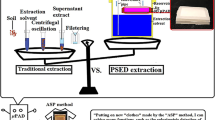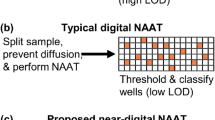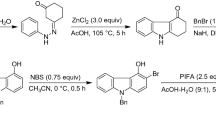Abstract
Despite substantial advances in sensing technologies, the development, preparation, and use of self-testing devices is still confined to specialist laboratories and users. Decentralized analytical devices will enormously impact daily lives, enabling people to analyze diverse clinical, environmental, and food samples, evaluate them and make predictions to improve quality of life, particularly in remote, resource-scarce areas. In recent years, paper-based analytical tools have attracted a great deal of attention; the well-known properties of paper, such as abundance, affordability, lightness, and biodegradability, combined with features of printed electrochemical sensors, have enabled the development of sustainable devices that drive (bio)sensors beyond the state of the art. Their blindness toward colored/turbid matrices (i.e., blood, soil), their portability, and the capacity of paper to autonomously filter/purge/react with target species make such devices powerful in establishing point-of-need tools for use by non-specialists. This protocol describes the preparation of a voltammetric phosphate sensor and an amperometric nerve agent biosensor; both platforms produce quantitative measurements with currents in the range of microamperes. These printed strips comprise three electrodes (graphite for working and counter electrodes and silver/silver chloride (Ag/AgCl) for the reference electrode) and nanomodifiers (carbon black and Prussian blue) to improve their performance and specificity. Depending on analytical need, different types of paper (filter, office) and configurations (1D, 2D, 3D) can be adopted. The protocol, based on the use of cost-effective manufacturing techniques such as drop casting (to chemically modify the substrate surface) and wax/screen printing (for creating the channels and electrodes), can be completed in <1 h.
This is a preview of subscription content, access via your institution
Access options
Access Nature and 54 other Nature Portfolio journals
Get Nature+, our best-value online-access subscription
$29.99 / 30 days
cancel any time
Subscribe to this journal
Receive 12 print issues and online access
$259.00 per year
only $21.58 per issue
Buy this article
- Purchase on Springer Link
- Instant access to full article PDF
Prices may be subject to local taxes which are calculated during checkout





Similar content being viewed by others
Data availability
The data generated or analyzed during this study are included in this published article and its Supplementary Information files.
References
Urdea, M. et al. Requirements for high impact diagnostics in the developing world. Nature 444, 73–79 (2006).
Turner, A. P. Biosensors: sense and sensibility. Chem. Soc. Rev. 42, 3184–3196 (2013).
Witkowska Nery, E., Kundys, M., Jelen, P. S. & Jönsson-Niedziółka, M. Electrochemical glucose sensing: is there still room for improvement? Anal. Chem. 88, 11271–11282 (2016).
Kumar, A. A. et al. From the bench to the field in low-cost diagnostics: two case studies. Angew. Chem. Int. Ed. 54, 5836–5853 (2015).
Martinez, A. W., Phillips, S. T., Whitesides, G. M. & Carrilho, E. Diagnostics for the developing world: microfluidic paper-based analytical devices. Anal. Chem. 82, 3–10 (2010).
Parolo, C. & Merkoçi, A. Paper-based nanobiosensors for diagnostics. Chem. Soc. Rev. 42, 450–457 (2013).
Yang, Y. et al. Paper-based microfluidic devices: emerging themes and applications. Anal. Chem. 89, 71–91 (2016).
Arduini, F., Cinti, S., Scognamiglio, V. & Moscone, D. Paper-based electrochemical devices in biomedical field: recent advances and perspectives. in Comprehensive Analytical Chemistry: Volume 77: Past, Present and Future Challenges of Biosensors and Bioanalytical Tools in Analytical Chemistry: A Tribute to Professor Marco Mascini 385–413 (Elsevier, 2017).
Carrilho, E., Martinez, A. W. & Whitesides, G. M. Understanding wax printing: a simple micropatterning process for paper-based microfluidics. Anal. Chem. 81, 7091–7095 (2009).
Cinti, S., Talarico, D., Palleschi, G., Moscone, D. & Arduini, F. Novel reagentless paper-based screen-printed electrochemical sensor to detect phosphate. Anal. Chim. Acta 919, 78–84 (2016).
Murphy, J. & Riley, J. A modified single solution method for the determination of phosphate in natural waters. Anal. Chim. Acta 27, 31–36 (1962).
Cinti, S. et al. Low-cost and reagent-free paper-based device to detect chloride ions in serum and sweat. Talanta 179, 186–192 (2018).
Cinti, S., Minotti, C., Moscone, D., Palleschi, G. & Arduini, F. Fully integrated ready-to-use paper-based electrochemical biosensor to detect nerve agents. Biosens. Bioelectron. 93, 46–51 (2017).
Cinti, S. et al. Novel carbon black-cobalt phthalocyanine nanocomposite as sensing platform to detect organophosphorus pollutants at screen-printed electrode. Electrochim. Acta 188, 574–581 (2016).
Cinti, S., Basso, M., Moscone, D. & Arduini, F. A paper-based nanomodified electrochemical biosensor for ethanol detection in beers. Anal. Chim. Acta 960, 123–130 (2017).
De Araujo, W. R. & Paixao, T. R. L. C. Fabrication of disposable electrochemical devices using silver ink and office paper. Analyst 139, 2742–2747 (2014).
Cinti, S., De Lellis, B., Moscone, D. & Arduini, F. Sustainable monitoring of Zn (II) in biological fluids using office paper. Sens. Actuat. B 253, 1199–1206 (2017).
da Silva, G. O., de Araujo, W. R. & Paixão, T. R. L. C. Portable and low-cost colorimetric office paper-based device for phenacetin detection in seized cocaine samples. Talanta 176, 674–678 (2018).
Chagas, C. L. et al. A fully disposable paper-based electrophoresis microchip with integrated pencil-drawn electrodes for contactless conductivity detection. Anal. Methods 8, 6682–6686 (2016).
Dossi, N. et al. Digitally controlled procedure for assembling fully drawn paper-based electroanalytical platforms. Anal. Chem. 89, 10454–10460 (2017).
Dias, A. A. et al. Detection of analgesics and sedation drugs in whiskey using electrochemical paper-based analytical devices. Electroanalysis 30, 2250–2257 (2018).
de Araujo, W. R. et al. Single-step reagentless laser scribing fabrication of electrochemical paper-based analytical devices. Angew. Chem. Int. Ed. Engl. 129, 15309–15313 (2017).
de Tarso Garcia, P., Cardoso, T. M. G., Garcia, C. D., Carrilho, E. & Coltro, W. K. T. A handheld stamping process to fabricate microfluidic paper-based analytical devices with chemically modified surface for clinical assays. RSC Adv. 4, 37637–37644 (2014).
Novell, M., Parrilla, M., Crespo, G. A., Rius, F. X. & Andrade, F. J. Paper-based ion-selective potentiometric sensors. Anal. Chem. 84, 4695–4702 (2012).
Dağcı, K. & Alanyalıoğlu, M. Preparation of free-standing and flexible graphene/Ag nanoparticles/poly (pyronin Y) hybrid paper electrode for amperometric determination of nitrite. ACS Appl. Mater. Interfaces 8, 2713–2727122 (2016).
Lu, J., Ge, S., Ge, L., Yan, M. & Yu, J. Electrochemical DNA sensor based on three-dimensional folding paper device for specific and sensitive point-of-care testing. Electrochim. Acta 80, 334–341 (2012).
Santhiago, M., Wydallis, J. B., Kubota, L. T. & Henry, C. S. Construction and electrochemical characterization of microelectrodes for improved sensitivity in paper-based analytical devices. Anal. Chem. 85, 5233–5239 (2013).
Cinti, S., Proietti, E., Casotto, F., Moscone, D. & Arduini, F. Paper-based strips for the electrochemical detection of single and double stranded DNA. Anal. Chem. 90, 13680–13686 (2018).
Cinti, S., Cusenza, R., Moscone, D. & Arduini, F. Paper-based synthesis of Prussian blue nanoparticles for the development of whole blood glucose electrochemical biosensor. Talanta 187, 59–64 (2018).
Noiphung, J. et al. Electrochemical detection of glucose from whole blood using paper-based microfluidic devices. Anal. Chim. Acta 788, 39–45 (2013).
Acknowledgements
S.C. thanks Fondazione Umberto Veronesi for a postdoctoral fellowship in 2018.
Author information
Authors and Affiliations
Contributions
S.C. conceived and designed the protocol. S.C., D.M., and F.A. designed, performed, and analyzed the experiments reported in the ‘Anticipated results’ section.
Corresponding authors
Ethics declarations
Competing interests
The authors declare no competing interests.
Additional information
Peer review information: Nature Protocols thanks W.K.T. Coltro, Conor F. Hogan, and other anonymous reviewer(s) for their contribution to the peer review of this work.
Publisher’s note: Springer Nature remains neutral with regard to jurisdictional claims in published maps and institutional affiliations.
Related links
Key references using this protocol
Cinti, S., Talarico, D., Palleschi, G., Moscone, D., & Arduini, F. Anal. Chim. Acta 919, 78–84 (2016): https://doi.org/10.1016/j.aca.2016.03.011
Cinti, S., Minotti, C., Moscone, D., Palleschi, G., & Arduini, F. Biosens. Bioelectron. 93, 46–51 (2017): https://doi.org/10.1016/j.bios.2016.10.091
Cinti, S., Proietti, E., Casotto, F., Moscone, D., & Arduini, F. Anal. Chem. 90, 13680–13686 (2018): https://doi.org/10.1021/acs.analchem.8b04052
Integrated supplementary information
Supplementary Fig. 1. Diffusion of analyte at different paper-based electrodes.
Difference in diffusion of analytes at a filter paper-based electrode (top) and at an office paper-based electrode (bottom). In the case of filter paper, the analyte must diffuse within the cellulose matrix of paper prior to arrive at the working electrode surface. It causes a lowering of diffusion, thus a lowering of the recorded current (sensitivity). In the case of office paper, the analyte does not encounter the paper while diffusing towards the working electrode area. Diffusion is not limited by the paper and the recorded current is higher than that one recorded with a filter paper-based electrode.
Supplementary Fig. 2. Wax-patterning design.
Several example patterns and channels that have been drawn with Adobe Illustrator, prior to being wax printed.
Supplementary Fig. 3. Electrodes’ stencil design.
Electrodes’ patterns that have been drawn with Adobe Illustrator. These patterns are used to obtain stencils to screen-print conductive inks onto the chosen paper-based substrates.
Supplementary information
Supplementary Information
Supplementary Figures 1–3
Rights and permissions
About this article
Cite this article
Cinti, S., Moscone, D. & Arduini, F. Preparation of paper-based devices for reagentless electrochemical (bio)sensor strips. Nat Protoc 14, 2437–2451 (2019). https://doi.org/10.1038/s41596-019-0186-y
Received:
Accepted:
Published:
Issue Date:
DOI: https://doi.org/10.1038/s41596-019-0186-y
This article is cited by
-
An All-In-One Multifunctional Touch Sensor with Carbon-Based Gradient Resistance Elements
Nano-Micro Letters (2022)
-
An origami paper-based electrochemical biosensing platform for quality control of agri-food waste in the valorization strategy
Microchimica Acta (2022)
-
On-chip immunomagnetic bead swarm based on magnetic actuation and mechanical vibration for biological detection
Science China Technological Sciences (2022)
-
Integrating programmable DNAzymes with electrical readout for rapid and culture-free bacterial detection using a handheld platform
Nature Chemistry (2021)
-
Facile fabrication of paper-based flexible thermoelectric generator
npj Flexible Electronics (2021)
Comments
By submitting a comment you agree to abide by our Terms and Community Guidelines. If you find something abusive or that does not comply with our terms or guidelines please flag it as inappropriate.



